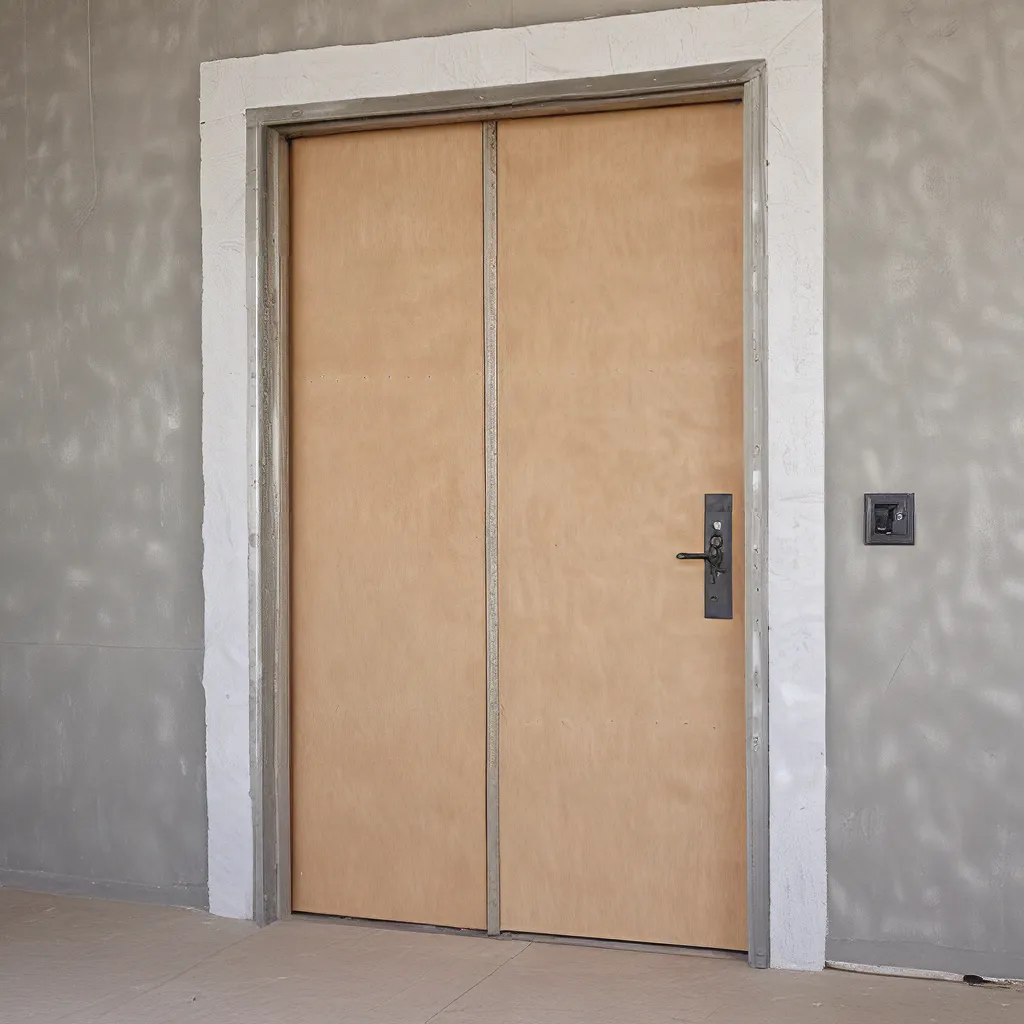
When it comes to making your home or business more energy-efficient, one often overlooked area is door insulation. Doors are a critical component of any structure, serving as both functional access points and thermal barriers that can significantly impact a building’s overall energy efficiency. By optimizing door insulation, you can not only reduce energy costs but also contribute to a more sustainable and comfortable indoor environment.
The Importance of Door Insulation
Doors play a vital role in the energy efficiency of a building. Poorly insulated doors can allow significant heat transfer, leading to increased heating and cooling costs and decreased comfort for occupants. On the other hand, properly insulated doors can help maintain a stable indoor temperature, reducing the strain on your HVAC system and lowering your overall energy consumption.
Energy efficiency is one of the most cost-effective ways to combat climate change, reduce energy costs, and improve the competitiveness of businesses. By making energy-efficient upgrades, such as improving door insulation, you can save money on energy bills and contribute to a more sustainable future.
Assessing Your Door’s Insulation
Before you can optimize your door’s insulation, it’s essential to assess its current condition. Look for signs of air leaks around the door frame, such as drafts or visible gaps. You can also use a thermal camera or perform a blower door test to identify areas where heat is escaping.
Once you’ve identified the problem areas, you can take steps to improve the insulation. This may involve adding weatherstripping, replacing the door’s core with a more insulative material, or even replacing the entire door with a energy-efficient model.
Choosing the Right Insulation Materials
When it comes to door insulation, there are several materials to consider, each with its own advantages and disadvantages. Some of the most common options include:
| Material | Insulation Value (R-value) | Durability | Cost |
|---|---|---|---|
| Fiberglass | 3-4 per inch | High | Moderate |
| Foam | 5-7 per inch | High | Moderate to High |
| Wood | 1-2 per inch | High | Moderate to High |
| Metal | 1-2 per inch | High | Moderate to High |
The R-value, which measures a material’s resistance to heat transfer, is a crucial factor in determining the effectiveness of the insulation. Generally, the higher the R-value, the better the insulation.
When selecting insulation materials, consider factors such as cost, durability, and the specific needs of your door and climate. For example, in areas with extreme temperatures, a higher R-value may be necessary to maintain optimal energy efficiency.
Improving Door Insulation: DIY vs. Professional Installation
While some homeowners may feel confident tackling door insulation projects on their own, it’s often advisable to consult with a professional door repair or installation service. These experts can provide valuable insights and ensure the job is done correctly, maximizing the energy efficiency and long-term performance of your doors.
Professional door services can assess the specific needs of your doors, recommend the most appropriate insulation materials, and handle the installation process with precision. This can save you time, money, and the hassle of potential DIY mistakes, ultimately leading to a more effective and long-lasting solution.
Smart Door Technologies for Energy Efficiency
In addition to traditional insulation methods, advancements in smart door technologies have introduced new ways to enhance the energy efficiency of your doors. These technologies include:
-
Automated Seals: Smart doors with automated seals can automatically adjust to changing environmental conditions, ensuring a tight seal and preventing air leaks.
-
Integrated Sensors: Sensors integrated into smart doors can detect temperature, humidity, and air pressure, allowing the door to adjust its sealing and insulation properties accordingly.
-
Remote Monitoring: Smart door systems often include remote monitoring capabilities, allowing you to track the door’s performance and identify any potential issues.
-
Renewable Energy Integration: Some smart doors can be integrated with renewable energy sources, such as solar panels, to further reduce the building’s overall energy consumption.
By incorporating these smart door technologies, you can take your energy efficiency efforts to the next level, maximizing the cost savings and environmental benefits of your door upgrades.
Maintaining Door Insulation for Long-Term Efficiency
Proper maintenance is essential to ensuring the longevity and continued efficiency of your door’s insulation. Regular inspections, weatherstripping replacements, and addressing any issues promptly can help maintain the optimal performance of your doors.
It’s also important to consider the lifespan of your doors and plan for eventual replacements. Newer, energy-efficient door models can offer significantly improved insulation and thermal performance compared to older, less efficient options.
By prioritizing door insulation and staying on top of maintenance, you can achieve significant energy savings, contribute to environmental sustainability, and enjoy a more comfortable and energy-efficient indoor environment for years to come.
Conclusion
Optimizing door insulation is a crucial step in improving the energy efficiency of your home or business. By assessing your doors, choosing the right insulation materials, and incorporating smart technologies, you can reduce your energy costs, increase your comfort, and support a sustainable future.
Remember, professional door services can be an invaluable resource in guiding you through the process and ensuring your door upgrades are done right. Take the first step towards a more energy-efficient and cost-effective building today.


